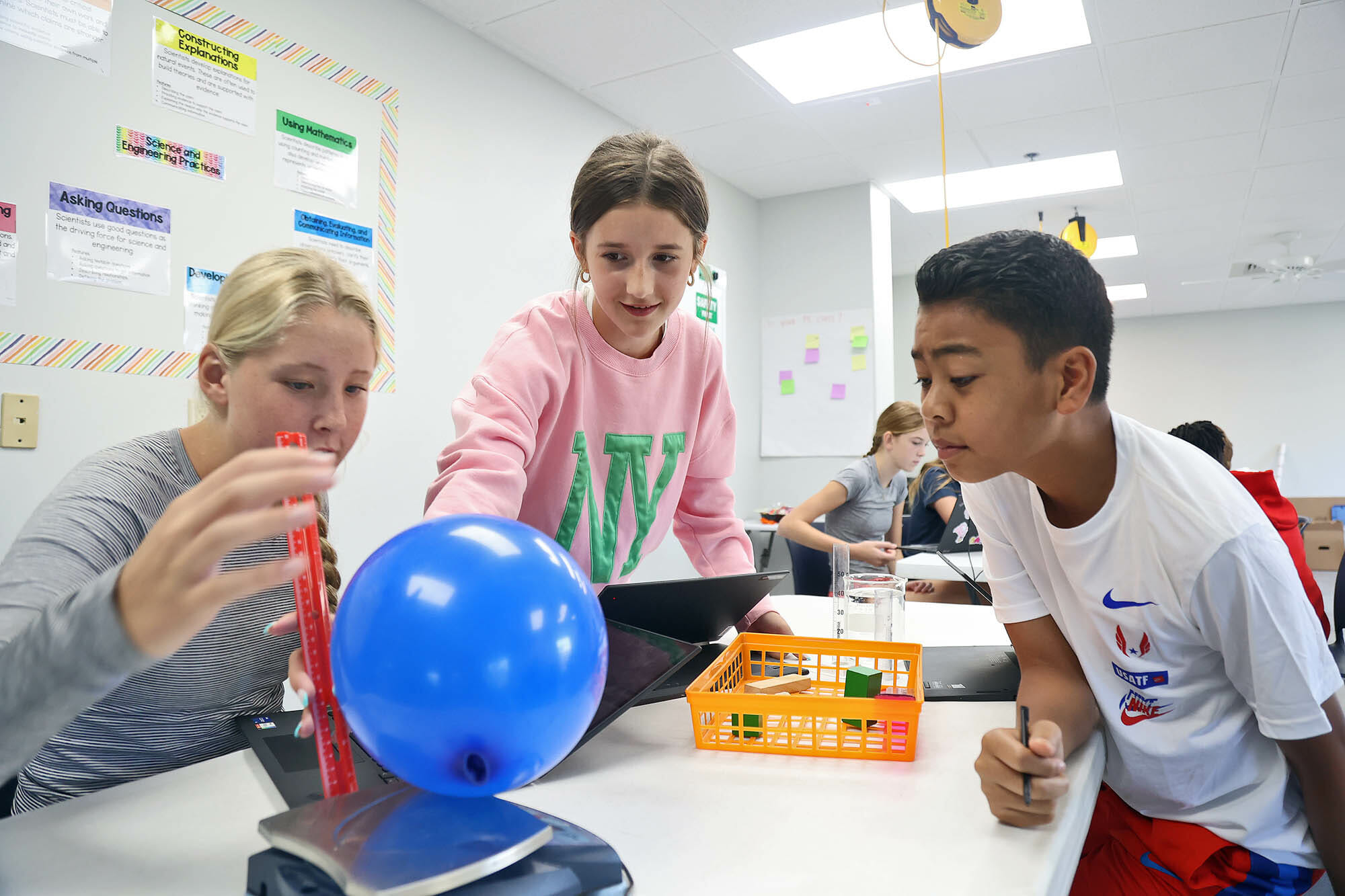Periodically, we will test our intercom system at MICDS from locations around campus just before the start of the school day, and on these occasions I have fallen into the habit of announcing a “fun fact” when it is my turn to speak. Last week’s fun fact was this: there are more molecules in a teaspoon of water than there are teaspoons of water in the Atlantic Ocean. The vastness of what we cannot see, and what we do not understand, came back to me this week when I read an article about protons just published in Quanta Magazine.
Charlie Wood, the article’s author, describes a proton not as a fixed little ball in the nucleus of an atom, as many of us might remember it from our science textbooks, but as a variable “quantum mechanical object that exists as a haze of probabilities until an experiment forces it to take a concrete form”—a form which can “differ drastically depending on how researchers set up their experiment.” According to a study published in the journal Nature in August, a proton is not so much an object as a “state” of “two up quarks and one down quark bound by gluons.” If that makes things clearer for you. Further convoluting the case are so-called “charm” quarks and antiquarks, which are actually heavier than the proton that contains them. “This is the most complicated thing that you could possibly imagine,” says Mike Williams, a physicist at the Massachusetts Institute of Technology. “The proton has been humbling to humans. Every time you think you kind of have a handle on it, it throws you some curveballs.”
A child is like a proton, I think: a “haze of probabilities”; an ever-changing “state” more than a rigidly defined textbook entity; a bundle of contradictions; “the most complicated thing that you could possibly imagine.” I have referenced before Neil DeGrasse Tyson’s observation about the unpredictable, “nonlinear” nature of human behavior. “That’s why physics is easy,” he says, “and sociology is hard.” It is also why parenting is hard, and teaching is hard, and humbling. Every time you think you have a handle on it, it throws you some curveballs.
I wasn’t sure that I had enough time to write you a letter this week—I have been traveling since Wednesday, and my time has not been my own—but when I stumbled across the reporting on subatomic research in Quanta, I couldn’t miss the opportunity to connect it to our shared endeavor in effecting the education and growth of your children. They are, like protons, indispensable to our experience of living, full to bursting with charm, and never quite the same thing twice.
Always reason, always compassion, always courage. My best wishes to you and your families for a joyful weekend.
Jay Rainey
Head of School
